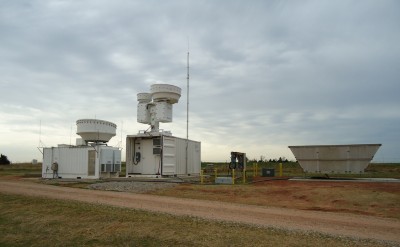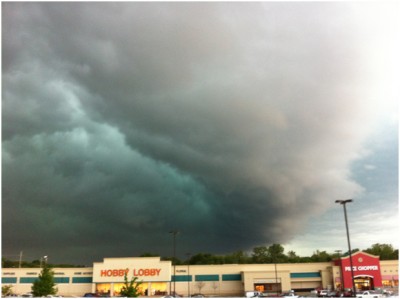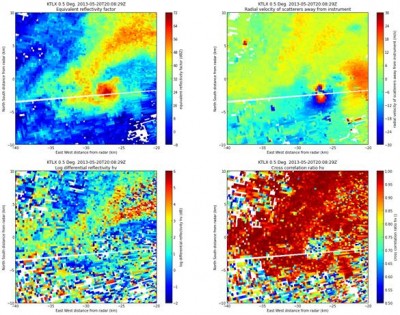“We’re talking about 500,000 square miles under the gun for severe weather,” warned CNN meteorologist Indra Petersons on Monday morning. “Today could be as bad as yesterday,” she added.
It was May 20. Over the weekend, severe weather had already caused fatalities and a tornado alert was in place across five states, from Texas to Michigan.
Sitting in his sun-filled office at Pacific Northwest National Laboratory in eastern Washington, Jim Mather, a climate scientist, looked worried. In his role as technical director of the Department of Energy’s Atmospheric Radiation Measurement (ARM) Climate Research Facility, he is responsible for the operations of 33 sophisticated instrument suites scattered across 55,000 square miles in north-central Oklahoma, as well as engineering and operations staff at the site and several other locations around the world.
By evening, a 1.3-mile wide tornado with wind speeds of up to 200 miles per hour had devastated Moore, Oklahoma, a populous suburb of Oklahoma City. This type of wind was reported as “the kind of wind that drives two-by-four planks through roofs and tosses real pickups like Tonka trucks” in a related New York Times article about tornado destruction in Granbury, Texas.
“These [tornadoes] are a perennial issue. Every spring, conditions are ripe for tornadoes between Texas and Wisconsin,” said Mather. “We constantly think about these weather events and monitor them closely,” he added.

The Past Two Decades
From its inception in 1990, the ARM Program has operated sophisticated climate and weather research facilities all over the world. The choice of facility sites though depends on how a particular location affords three advantages: enough variation in weather and climate conditions, the ability to maintain the facility all year round, and the opportunity to collaborate with the local scientific community.
The U.S. southern Great Plains scored on all counts.

For the past two decades, the site has provided unique information about land temperature, cloud properties, and weather patterns over the Great Plains. Scientists from all over the world have published research papers using data from the Southern Great Plains, or SGP site, and about 280 research campaigns have been conducted at the site since the site was dedicated in November 1992. This “laboratory without walls” has turned out to be ARM’s signature research facility.
As the climate modeling community increasingly finds links between warming land and ocean temperatures and pollution with increased incidence of thunderstorms, the location in the tornado corridor provides researchers with a unique opportunity to study atmospheric conditions that can lead to severe weather, like the recent tornado.
But the advantage comes with its share of worries.
May 20, When the Tornado Struck
“The tornado warnings today are down in OKC/Moore area, which is about 1-2 hours away from the site.” Adam Theisen, a research associate at the University of Oklahoma emailed. Theisen is part of the ARM Climate Research Facility’s Data Quality Office in Norman. “I looked at the National Weather Service radar data for yesterday, and the storms did not look to pass over any of our sites,” his email stated.

“It is a personal issue for me,” said Mather about the tornado alert. His thoughts go beyond the science and the instruments. Approximately 20 personnel, both staff and engineers, work at the SGP site, and other ARM colleagues are located throughout Oklahoma and Kansas.
As news of the tornado’s destruction trickled out Monday afternoon, a welcome email from Theisen confirmed that all SGP personnel and instruments were unscathed. The $20 million research facility was once again spared and its personnel safe. But the news was received with mixed emotions.
“We have felt the impact of severe weather, but have been pretty lucky so far,” said a very relieved Mather. Sadly, Moore was not so fortunate.
Ciao—and remember, measurements matter!

